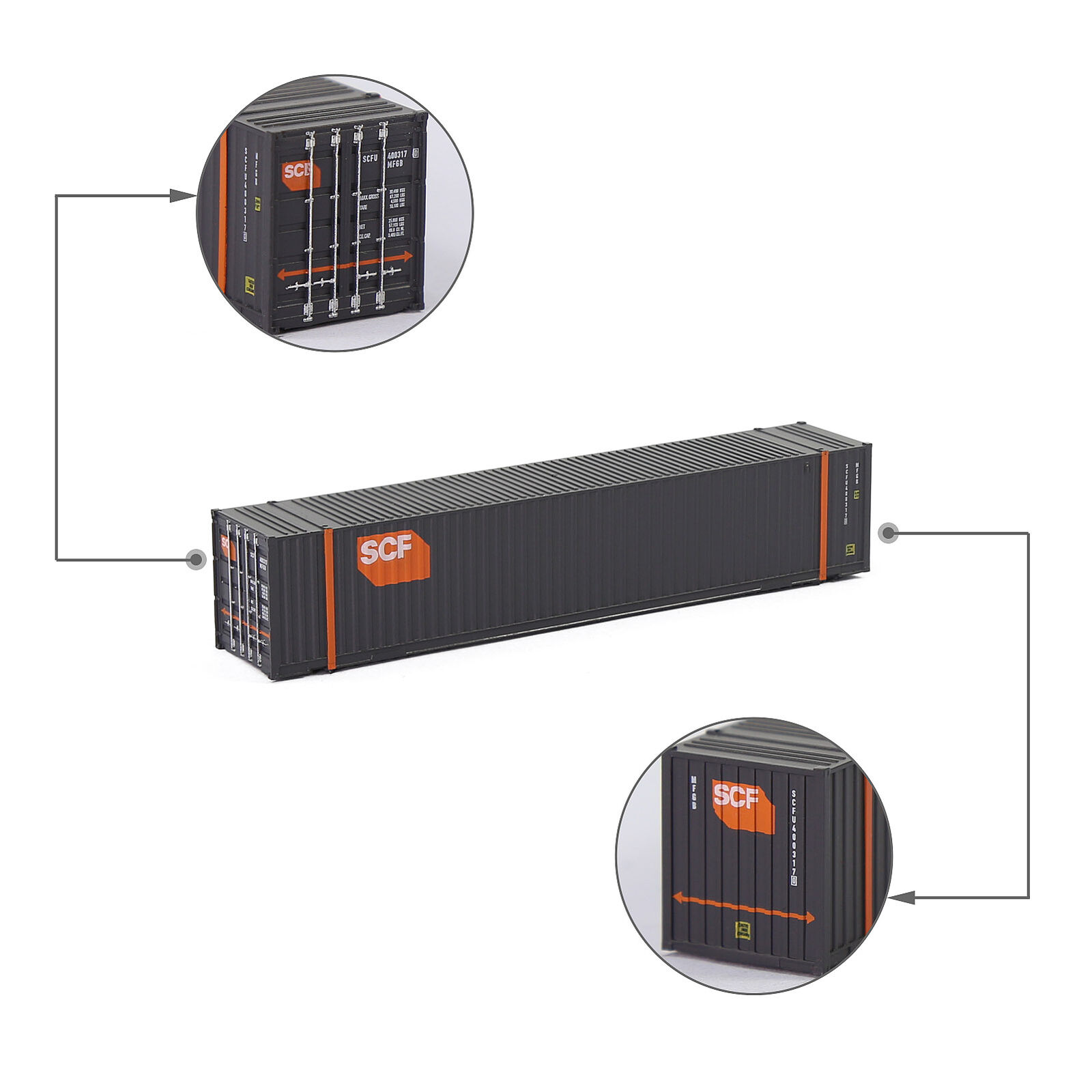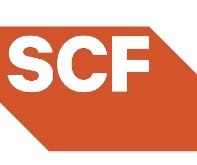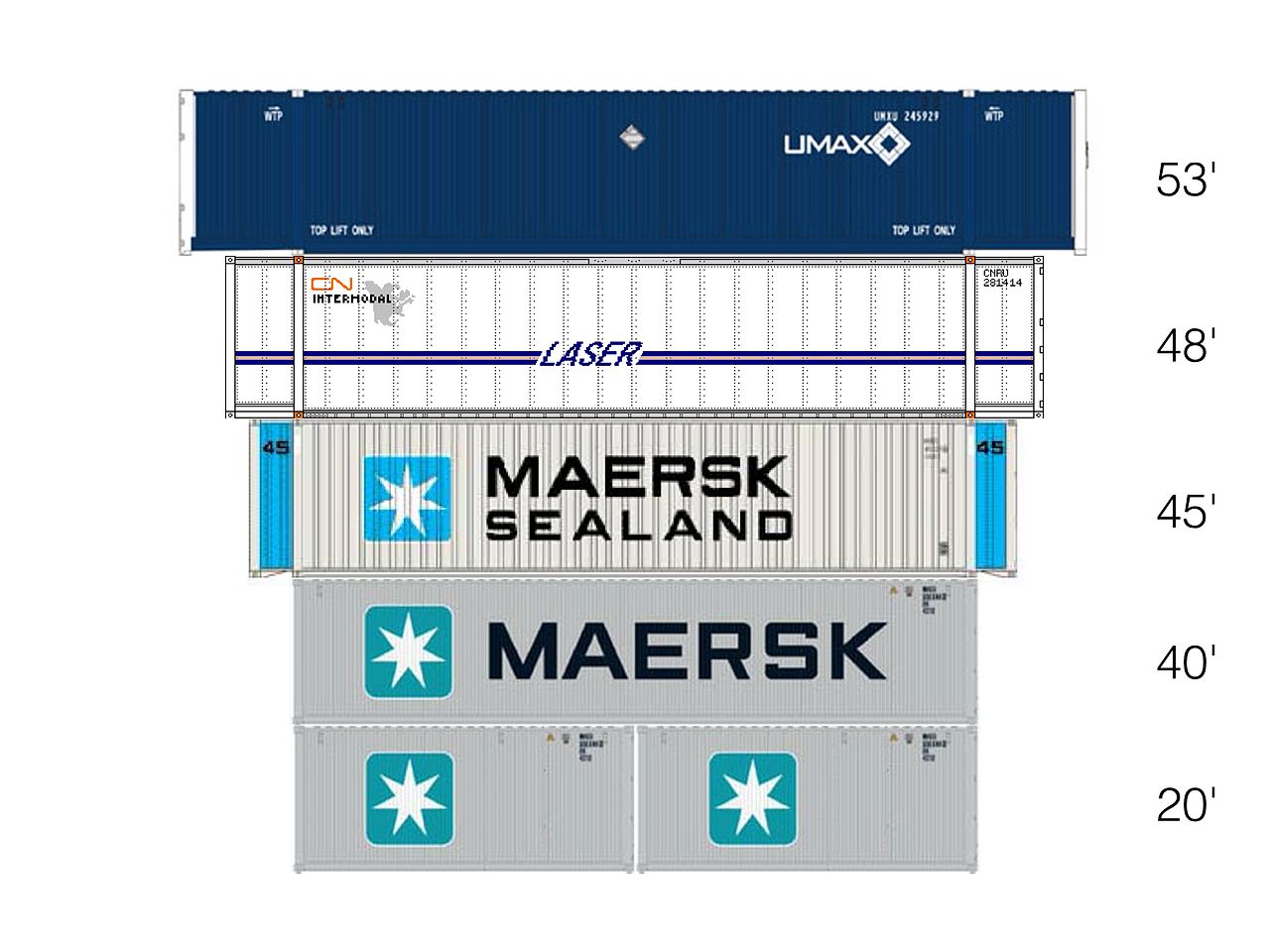Prototype History: An intermodal container is a large standardized shipping container, designed and built for intermodal freight transport, meaning these containers can be used across different modes of transport – from ship to rail to truck – without unloading and reloading their cargo. Intermodal containers are primarily used to store and transport materials and products efficiently and securely in the global containerized intermodal freight transport system, but smaller numbers are in regional use as well. These containers are known under a number of names, such as simply container, cargo or freight container, ISO container, shipping, sea or ocean container, container van or (Conex) box, sea or c can.
The 48-foot (14.63 m) shipping container is a High Cube container in that it is 9 ft 6 in (2.90 m) tall on the exterior. It is 8 ft 6 in (2.59 m) wide which makes it 6 inches (15 cm) wider than ISO-standard containers. This size was introduced by container shipping company APL in 1986, and is used domestically in North America on road and rail, and may be transported on deck by ship. This size being 8 feet (2.44 m) longer and 6 inches (15 cm) wider has 29% more volume capacity than the standard 40-ft High Cube, yet the cost to move it by truck or rail are almost the same.
From Wikipedia
The 48-foot (14.63 m) shipping container is a High Cube container in that it is 9 ft 6 in (2.90 m) tall on the exterior. It is 8 ft 6 in (2.59 m) wide which makes it 6 inches (15 cm) wider than ISO-standard containers. This size was introduced by container shipping company APL in 1986, and is used domestically in North America on road and rail, and may be transported on deck by ship. This size being 8 feet (2.44 m) longer and 6 inches (15 cm) wider has 29% more volume capacity than the standard 40-ft High Cube, yet the cost to move it by truck or rail are almost the same.
From Wikipedia
Road Name History: SCF is Australia’s leading supplier of tailored shipping container solutions. It provides the widest and most diverse range of intermodal, tank and on-site storage containers for hire or purchase.
SCF started back in the early 1990s, hiring and selling shipping containers to the furniture removal and relocation industry. The company grew rapidly during the 2000s, providing storage and transport solutions to numerous sectors across the Australian economy. The company had been known as SCF International containers, in 2010 it was rebranded as The SCF Group.. (JTC MODEL TRAINS)
SCF started back in the early 1990s, hiring and selling shipping containers to the furniture removal and relocation industry. The company grew rapidly during the 2000s, providing storage and transport solutions to numerous sectors across the Australian economy. The company had been known as SCF International containers, in 2010 it was rebranded as The SCF Group.. (JTC MODEL TRAINS)
Item created by: CNW400 on 2024-08-04 17:37:49
If you see errors or missing data in this entry, please feel free to log in and edit it. Anyone with a Gmail account can log in instantly.
If you see errors or missing data in this entry, please feel free to log in and edit it. Anyone with a Gmail account can log in instantly.






